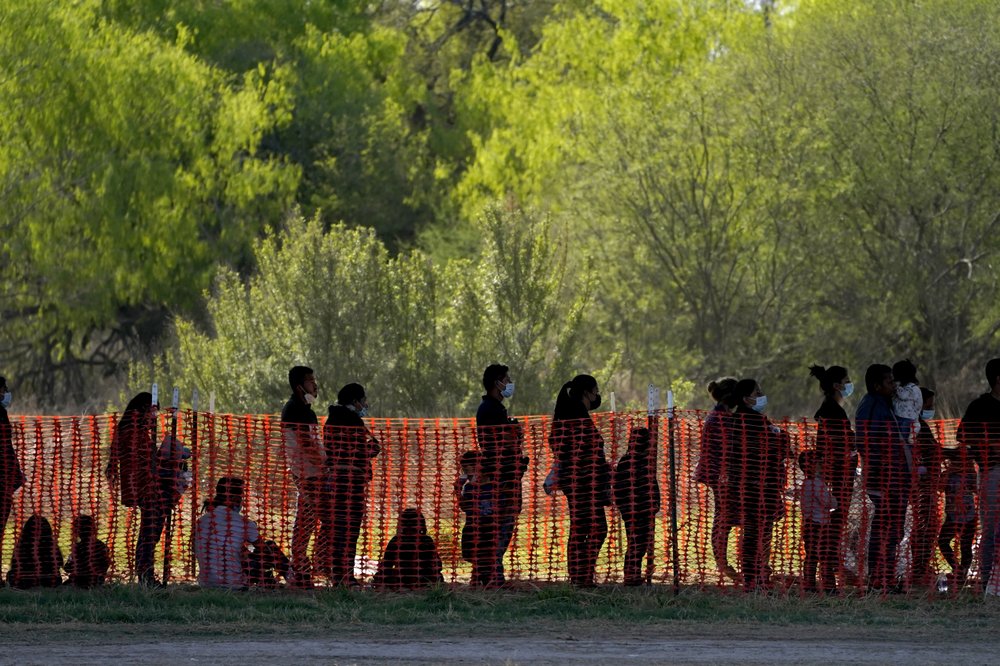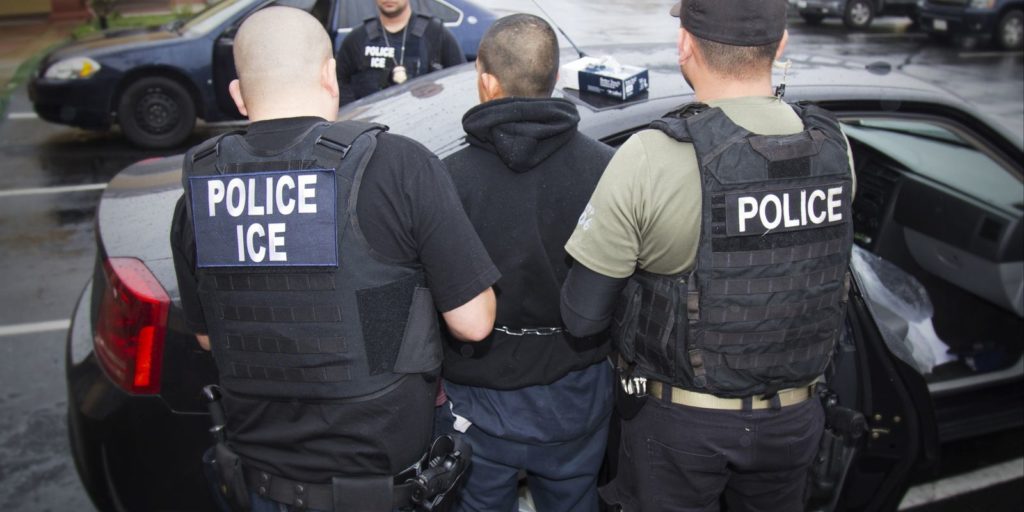Matt O’Brien: How loose borders led to a house of horrors in Alabama

José Paulino Pascual-Reyes allegedly kidnapped a 12-year-old girl in Tallapoosa County, tied her to a bedpost, forced her to consume alcohol, and repeatedly assaulted her. According to police, he committed this abomination in his mobile home, with the decomposing, dismembered bodies of his girlfriend and her son stashed nearby. Now, at least two people are dead allegedly at the hands of this monster, and a pre-teen girl has experienced the type of horrific trauma usually only seen in Hollywood films like “The Silence of the Lambs.” This is a shocking and gruesome tale. However, what is most shocking about Pascual-Reyes’ story is that if our political leaders prioritized immigration enforcement, this whole catastrophe could have been prevented. Pascual-Reyes is an illegal alien – one who was already deported from the U.S. at least once in 2014. Therefore, he could have been in the custody of U.S. Immigration and Customs Enforcement (ICE), awaiting expedited removal from the United States. It is easy to cut the Department of Homeland Security (DHS) a break and argue that thousands of “gotaways” make it over the border every day without being detected. Therefore, it simply isn’t reasonable to expect ICE or Customs and Border Protection (CBP) to know about every criminal deviant like Pascual-Reyes. But that argument lets immigration policymakers avoid responsibility way too easily. Pascual-Reyes appears to have been involved with Sandra Vazquez Ceja, another alien who had been paroled into the United States to pursue an asylum claim. Had agents from DHS been permitted to verify that Ceja was complying with the terms of her parole, they would likely have encountered Pascual-Reyes, detained him, and sought reinstatement of the deportation order entered against him in 2014. Such actions would have removed him from the community, ensured that he remained in ICE custody, and prohibited him from committing crimes. But that would have required the type of pro-active approach to immigration enforcement, which has been sorely lacking under both Republican and Democrat administrations over the last four decades – the notable exception being the four years of the Donald Trump presidency. The reality is, despite the fact that our asylum/refugee system is rife with fraud and has repeatedly been exploited by terrorists, criminals, and human rights abusers, DHS actually engages in minimal investigation, supervision, and oversight of asylum claimants. Where there is blatant evidence of a fraudulent asylum claim, an applicant might be subject to a site visit and interview by USCIS’ Fraud Detection and National Security Directorate (FDNS). But this occurs only in a very small number of cases. Rarer still is an investigation of asylum fraud by ICE. Almost non-existent are site visits by ICE to check up on people who have been paroled into the U.S. to await the adjudication of asylum and other immigration benefits applications. This type of laissez-faire approach to immigration enforcement is entirely untenable and inevitably leads to the macabre scene encountered in Alabama or equally disturbing (and preventable) tragedies like the murder of Kate Steinle and the kidnap, murder, and rape of Mollie Tibbets. Moreover, Pascual-Reyes, if convicted, is only the latest in a long line of illegal alien mass murderers that includes Rafael Resendiz-Ramirez, known as “The Railroad Killer,” Billy Chemirmir, and Ernesto Martinez-Guzman, among others. The only way to prevent cases like these is for DHS to go into migrant communities and seek out opportunities to encounter and apprehend illegal aliens. One of the best ways to do this is to monitor aliens with pending asylum applications, who often have illegal alien relatives and spouses for whom they later plan to seek immigration benefits. The fact is, 99 percent of the asylum claims filed by citizens of Mexico and the countries that make up Central and South America are utterly baseless. The Immigration and Nationality Act provides ample authority for the prompt removal of border jumpers and other alien lawbreakers, if only the government would use it. And most regular Americans understand that we cannot pretend that everyone filing a bogus asylum application in order to access the United States is well-intentioned and means us no harm. If our elected leaders would get out of the way and let them perform their sworn duties, our immigration enforcement officers would be much more likely to find and detain deviant predators like Pascual-Reyes and Resendiz-Ramirez before they prey on innocent people. Instead, our representatives have saddled us with contradictory immigration policies that attract criminals and permit them to remain here with impunity – at the expense of both law-abiding Americans and legal immigrants. Matt O’Brien is director of investigations at the Immigration Reform Law Institute and a former immigration judge. Prior to becoming an immigration judge, he served as a division head in U.S. Citizenship and Immigration Service’s Fraud Detection and National Security Directorate. Before working at USCIS, he served as assistant chief counsel with U.S. Immigration and Customs Enforcement.
Border Patrol: Despite Alejandro Mayorkas’ claims, 60% of migrants being released into U.S. communities

Despite claims made by Department of Homeland Security Secretary Alejandro Mayorkas, the majority of those entering the U.S. illegally are not being deported by U.S. Immigration and Customs Enforcement (ICE), the head of the Border Patrol union, Brandon Judd, told The Center Square. Mayorkas, who traveled to Del Rio, Texas, where nearly 15,000 Haitian migrants gathered this past week, warned illegal immigrants at a news conference, “If you come to the United States illegally, you will be returned, your journey will not succeed, and you will be endangering your life and your family’s life.” Likewise, the Department of Homeland Security said in a statement that DHS, Border Patrol, ICE, and the U.S. Coast Guard were moving individuals from Del Rio to other processing locations in order to take individuals into custody, process them and remove them from the country. It added that DHS was securing additional transportation to accelerate the pace and increase the capacity of removal flights to Haiti and other destinations in the hemisphere within the next 72 hours. But the agency hasn’t confirmed how many flights and how many Haitians have been deported. A few days later, at another news conference in Del Rio on Tuesday, Texas Gov. Greg Abbott, when asked about the Biden administration’s deportation flight plans, said, “They have shown no capability of being able to process these migrants by the end of this week. The only thing they’ve shown is an incapability of dealing with this crisis, candidly, in a way they pretend it doesn’t even exist. And we’re here to tell you it exists.” The Associated Press reported that Haitians have been released on a “very, very large scale” in recent days, with one official estimating the number of those releases is in the thousands. “The first three [deportation] flights that went to Haiti included family units” who were deported, Judd said. But deportations are on a case-by-case basis, he added, and inconsistent. For example, “if the flights focus on deporting people to Haiti, the flights to Guatemala stop, and those people are released,” he said. “So, all you’re doing is robbing Peter to pay Paul. You’re shifting resources to handle one segment, and you’re releasing the other segment. Not all the people from Haiti are being flown back; not all the people are being expelled from under Title 42. A good number of them are, in fact, being released with an NTA (Notice to Appear) or NTR (Notice to Return),” notices related to the immigration court process. Border Patrol agents make official arrests and transfer individuals to ICE facilities. ICE then determines whether they are released with an order to reappear for court hearings to go through the process to remain in the U.S. or be deported. Haitians already processed and released into the community were observed boarding buses at the Val Verde Border Humanitarian Coalition in Del Rio. Roughly 50-60 Haitians at a time boarded a large commercial charter bus, and smaller groups were shuttled in a grey rundown minivan to the local bus station. With brown envelopes in hand, a mix of families and individuals also carried with them food, cash, and papers to help them reach their next destination. When asked where the bus was going, the first stop was San Antonio, with a final destination of Houston, The Center Square was told. Officials wouldn’t confirm if the Haitians were boarding planes to another destination or if San Antonio or Houston were their final destinations. This group of Haitians had already been processed by Border Patrol and released into the general population. Meanwhile, a steady flow of people continued to cross the Rio Grand River farther upstream from the bridge, crossing onto private property on a heavily trafficked area on Vega Verde, where Texas Department of Public Safety officers were waiting to detain them and call Border Patrol for pickup. DHS has also been busing Haitians to El Paso, Laredo, and cities in the Rio Grande Valley for processing, also adding them to flights to Tucson, Arizona, the Associated Press reported. Judd said of the roughly 200,000 apprehensions that Border Patrol makes, “they are probably dealing with 120,000 people because sometimes the same person or people are apprehended more than once. Of those, it’s right about 60-68 percent are being released [into the community] with NTAs. The vast majority are not being expelled or deported. The majority are being released into the United States.” When asked if this ratio applied to Haitians under the Del Rio Bridge, he said, “If we go off, historically speaking, the majority of the ones under the bridge will be released.” But this number can shift depending on which segment of the population ICE chooses to deport, he added. ICE “can say we’re going to send all the Haitians back, but then we’re going to release all the other people from another country. Or we can release the Haitians.” In response to being asked if there’s consistency in this process, he replied, “Zero consistency.” Bethany Blankley | The Center Square contributor
Groups call for Birmingham to be a sanctuary city after illegal immigrant arrests

Across a five-state ICE region, which includes Alabama, on average 200 illegal immigrants are being arrested each week, according to Bryan Cox, Southern Region Communications Director for U.S. Immigration and Customs Enforcement (ICE) in a weekend AL.com piece. According to Cox, the region consists of Alabama, Arkansas, Louisiana, Mississippi and Tennessee, and “about 90 percent of arrests in fiscal year 2017 and the first two quarters of fiscal 2018 were criminal.” In light of the arrests, immigrant rights organizations such as Hispanic Interest Coalition of Alabama (HICA) and Alabama Coalition for Immigrant Justice (ACIJ) are pushing for Birmingham Mayor Randall Woodfin to make the Magic City a sanctuary city to protect the illegal immigrants. “At least have Birmingham to recognize the work of immigrants and undocumented immigrants in our city,” ACIJ Lead Organizer Miguel Carpizo said. Multi-year effort Last January, then-Birmingham Mayor William Bell held a press conference with community leaders naming Birmingham a “welcoming city” regardless of immigration status. “Every individual who resides, works, plays or come through the city will know they are welcome and have no fear in interacting with their municipal government in any way,” Bell said. Following his press conference, the Birmingham City Council unanimously passed a resolution supporting illegal immigrants, though they did not declare it as a sanctuary city. But the HB56, also known as the Beason Hammon Act, stopped the city from setting a policy contrary to federal or state law.


